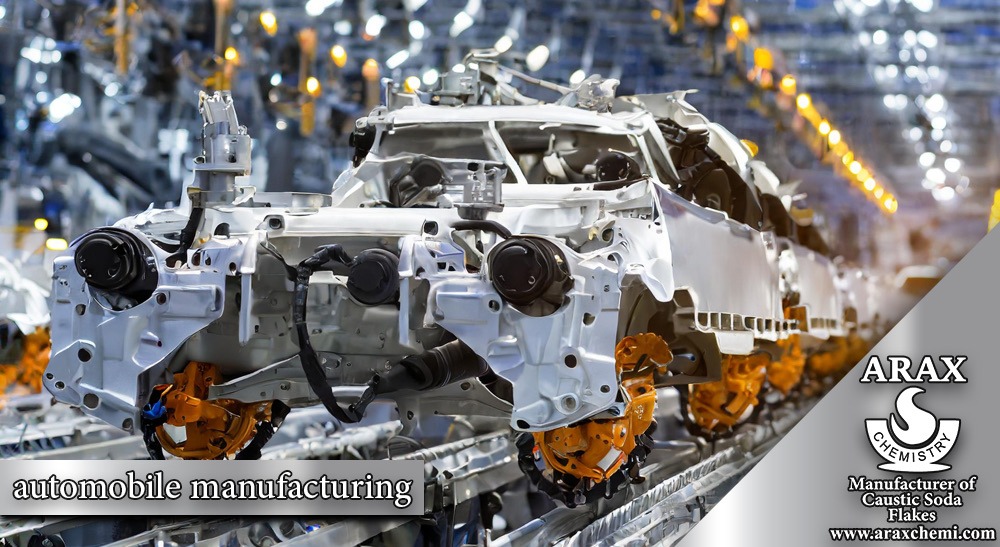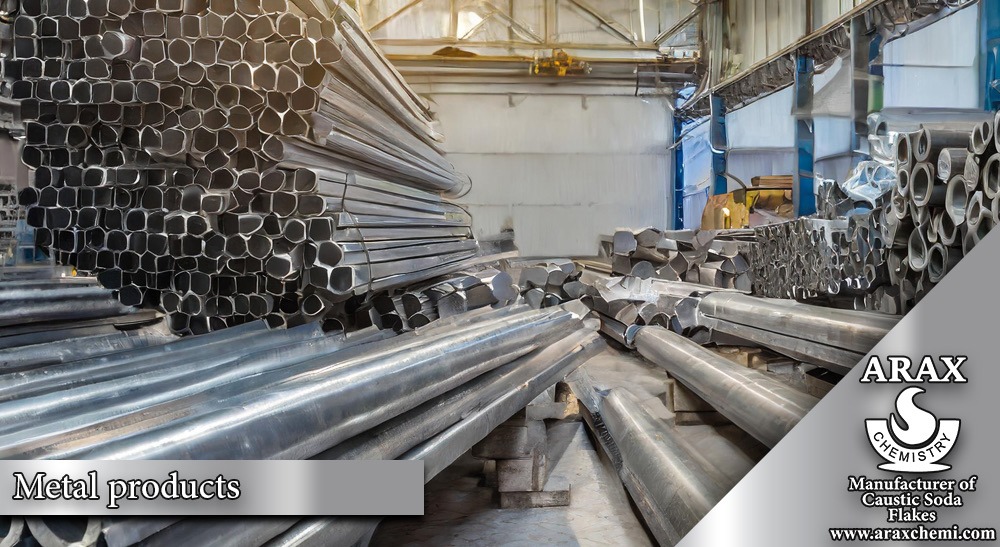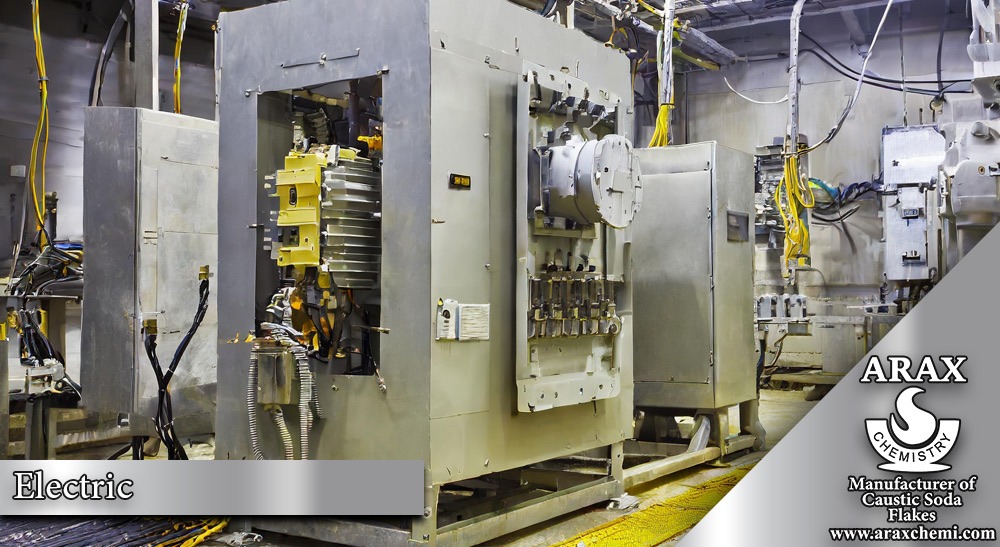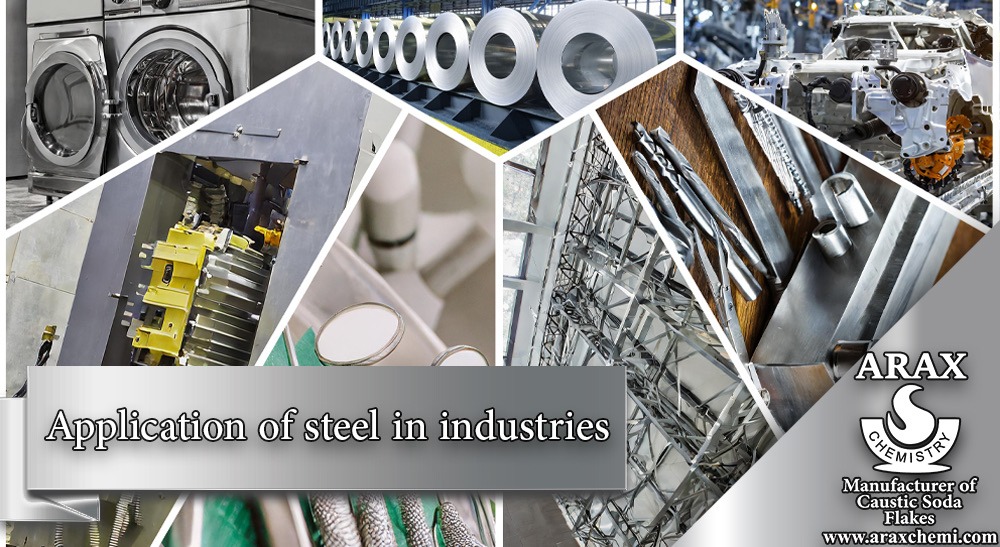Application of steel in industries
Steel is one of the most widely used metals in the world, which has different characteristics in different shapes and alloys to meet a wide range of applications. Steel in its simplest form is iron alloyed with carbon, but a series of steels with different properties can be created by adding other elements such as chromium, nickel, molybdenum, silicon and manganese. Due to its diverse properties, high strength and low production cost, steel is used to produce many products, and it is not surprising that many industries depend on steel. Without the steel industry, many other industries would not have grown as much or flourished as they do today.
Steel in industries
Due to its unique properties, steel in industries. Industries such as; Interior and exterior decoration, medical industries, marine industries, electronic industries, jewelry making and jewelry manufacturing, transportation and automobile manufacturing industries, kitchen and household appliance production, food industries, electricity production industries, agriculture, industrial equipment and machinery manufacturing, furniture production and Interior decoration, oil and gas industries, mining industries, construction are some of the most important industries in which steel is used. But in general, steel applications can be divided into seven basic parts based on the amount of consumption. According to the report of the World Steel Association (WSA), the percentage of steel allocated to each sector is as follows:
- Buildings and infrastructure 51%
- Mechanical equipment 15%
- Car 12%
- Metal and medical products 11%
- Shipping 5%
- Household appliances 3%
- Electrical equipment 3%
Steel in building and infrastructure
More than half of the annual steel production is used to construct buildings and infrastructure such as bridges. According to WSA, most of the steel used in this sector is in reinforcing bars (44%) and sheet products such as sheets used in interior walls and ceilings (31%). and structural sections (25%) are used. In addition to structural applications, steel is also used in buildings for HVAC systems and in things like stairs, rails, and shelving. Different types of steel can be designed to meet the unique needs of infrastructure projects to be used in different components in a variety of environments. Depending on the conditions the structure is exposed to, a specific steel alloy or a more common alloy can be used.

In addition to bridges, steel applications in transportation-related infrastructure include tunnels, rail tracks, fuel stations, train stations, ports, and airports. According to WSA, approximately 60% of steel is used in this sector. As a rebar, it is a toothed steel rebar that is placed inside the reinforced concrete. Steel is also widely used in utility infrastructure, including for fuel, water and electricity. WSA states that half of the steel used for utility infrastructure is in the form of underground pipes for water or natural gas. In the construction industry, a stable material like steel allows structures to be built quickly and at low cost. Since steel is produced in various alloys and shapes, it can meet the needs of any project.
The importance of steel in the construction industry
Steel can even be alloyed in various ways to protect against the elements. These characteristics of steel allow it to be used in almost any type of environment in the infrastructure of a building. The beginning of the 20th century saw the development of more efficient techniques for steel production. These developments have led to the rise of tall buildings as well as the growth of railways around the world. In fact, many famous historical structures, such as the Empire State Building, owe their strength and longevity to steel as their primary construction material. The construction industry continues to look to steel to provide solutions to the infrastructure needs of developing countries.
Steel in mechanical equipment
Steel is one of the most important and widely used materials in mechanical equipment. Steel is actually an alloy of iron and carbon, whose mechanical and chemical properties are improved by adding other elements such as chromium, nickel, molybdenum and vanadium. Even if a product is not made of steel, it is most likely produced by a steel machine. The second major use of steel includes bulldozers, tractors, machinery for making auto parts, cranes, and hand tools such as hammers and shovels. Also, rolling mills are used to shape steel in different shapes and thicknesses.
Steel is used in the manufacture of machine parts due to its high mechanical properties, resistance to corrosion and oxidation, formability and welding power. This includes parts such as nuts, bolts and industrial screws, rotating machine parts and cutting tools. Also, steel is used as the main material in the production of cutting tools and precision tools. For example, knives, cutting plates, cutting discs and precision tools are produced from steel. Due to its high corrosion resistance, hardness and ability to withstand mechanical stress, steel is an ideal choice for cutting tools that deal with hard and resistant materials.
Steel in the car
Steel is widely used in the automotive industry. Among the uses of steel in this industry, we can mention the manufacture of engine parts, car body, beams and other metal parts. Steel is a good choice for car parts due to its high impact resistance, flexibility and stability against different environmental conditions.

According to the WSA, on average, approximately 2,000 pounds, or 900 kilograms, of steel is used to build a car, with about a third of that used in the body structure and exterior, including the doors. Different types of steel are used in different parts of the car such as body, doors, steering wheel, wheel axle, interior, suspension system, gearbox and engine. Advanced high-strength steels, which are made using complex processes and are lighter in weight than traditional steels, make up about 60% of the body structure of modern cars. Today, most cars and other vehicles use advanced high strength steels or AHSS
Steel in metal and medical products
This section includes various consumer products such as furniture, food and beverage packaging, and razors. Steel is a valuable material in the packaging industry because it can protect your goods from the elements such as air, water and exposure to light. Steel is also fully recyclable, which can reduce production costs and help the environment. Steel is used in medical equipment as a very important and practical structural material. Among the types of steel used in medical equipment, L316 stainless steel can be mentioned. This type of steel is one of the most resistant and high-quality steels, and some of its features are:
Corrosion resistance: L316 steel shows good resistance to the effects of chemicals such as acids and alkalis. This property makes it suitable for medical devices that come into contact with chemicals. Resistance to electrical corrosion: L316 steel has high resistance to electrical corrosion. This feature is very important because in medical devices that come into contact with body tissue, it is important that electrical corrosion does not occur.

Allergic anesthesia: L316 steel has the property of allergic anesthesia and is well tolerated when dealing with skin and body tissue. This feature makes it an ideal choice for medical devices that come into contact with the body.
In medical devices, L316 steel is used in the production of various devices such as surgical instruments, heart needles, implants, prostheses, injection and sewing tools, diagnostic tools, etc. This type of steel has become a safe and reliable choice for medical equipment due to its resistance, durability and hygienic properties.
Steel in transportation
Steel is used in ships, trains and train cars and aircraft parts. WSA says the hulls of large ships are almost entirely made of steel, and steel ships carry 90% of the world’s cargo. Steel is an ideal material for marine applications because it can resist rust better than other common shipbuilding metals such as bronze, galvanized steel or brass. Steel is important for maritime transport in another way: almost all of the world’s 17 million shipping containers are made of steel. Chemical tankers often represent the greatest applications of steel, as these tankers require a material that is easy to fabricate, capable of being thoroughly cleaned when changing cargo, and highly durable. In addition, steel is found in trains in wheels, axles, bearings, and engines. In airplanes, steel is very important for engines and landing gear.
Steel is widely used in the aerospace industry due to its features such as light weight, high resistance to heat and pressure, corrosion resistance and strong mechanical properties. Steel is used in the construction of various parts, including engine parts, turbine systems, spacecraft and satellite bodies. As a strong structural and metallic material, steel is very suitable for enduring the harsh conditions of space and avoiding risks such as thermal contraction and high temperature changes.
Steel in household appliances
Steel also has many uses in the home appliance industry. In general, steel is used to make household appliances due to its properties such as corrosion resistance, beautiful appearance, high durability and rust resistance. Below are some of the uses of steel in household appliances:
Kitchen utensils
Stainless steel is used in the production of kitchen utensils such as pots, pans, bowls and cooking plates. This type of steel is usually reinforced with elements such as chromium and nickel to have a high resistance to corrosion and to be safe in contact with food.
Refrigerators and freezers
In the construction of internal and external parts of refrigerators and freezers, steel is usually used as a material resistant to rust and vulnerability to environmental conditions. At the same time, the beautiful appearance and stylish design of steel have made this type of home appliances attractive in terms of appearance.
Washing machine and dryer
Steel is used in the washing machine and dryer industry because of its resistance to water and corrosion. Some internal parts of the washing machine and dryer, such as barrels, doors and heating towers, are made of steel.

Electrical appliances
In the electrical appliances industry, steel has various uses. Some parts like bodies, front plates, handles and some other parts are made by steel. In this case, steel is not only used as a resistant material, but also preferred because of its beautiful appearance and modern design.
Sanitary ware
Steel also has applications in the sanitary ware industry. For example, steel is used in the production of sinks, faucets, handles and hand dryers. In this case, steel is a suitable choice for appliances that come in contact with water and moisture due to its resistance to water, rust and disinfection.
In general, steel in the household appliances industry is highly regarded due to its advantages such as corrosion resistance, long life, beautiful appearance, and the ability to wash and clean easily. These features have made steel to be used as a popular material in the production and design of household appliances.
Steel in electrical equipment
The last major part of steel applications includes applications in electricity generation and distribution, such as transformers with magnetic steel cores, generators; electric motors; rigs; and reinforced cables. Due to its properties such as corrosion resistance, mechanical strength, hardness, good electrical conductivity and formability, steel is used as the main material in the manufacture of electrical components. Below are some of the uses of steel in electrical equipment:

Body and mechanical parts
Steel is used as a structural material in electrical equipment such as cases, body plates, racks and other mechanical parts. Steel is used as a protective coating on electrical systems due to its high mechanical strength and ability to withstand various stresses.
Connection and terminal parts
In electrical equipment, steel is used to make connection and terminal parts. For example, in wiring and electrical connections, headers and pins are made of steel. Steel is used for reliable and stable electrical connections due to its good electrical conductivity and corrosion resistance.
Antennas and radios
In the manufacture of antennas and radios, parts of them such as antennas, supports and other parts are made of steel. Due to its electrical conductivity properties and resistance to environmental conditions, steel is used as a suitable material for transmitting signals and electronic communications.

Protective and protective parts
Steel is also used as protective and protective parts in electrical equipment. For example, steel is used in the production of protective parts for electrical circuits, protective parts for power generation, and protective parts for electrical devices. Due to its resistance to heat and impact, steel is the right choice for parts that are exposed to size risks.
Batteries
Steel also has applications in the battery industry. In both rechargeable and non-rechargeable batteries, steel is used as the material that holds the electrodes in the battery. Steel is used to transfer electric charge in batteries due to its good electrical conductivity properties and resistance to environmental conditions.

Switch parts and doors
In electrical equipment such as switches and doors, steel is used as a structural material. Due to its high mechanical strength and formability, steel is used as a suitable material for making parts that open and close.
Cooling parts
In electrical equipment such as computers and complex electronic equipment, steel is used as cooling parts. Due to its good thermal properties and corrosion resistance, steel is used for heat transfer and cooling of electronic components.
In general, steel is highly regarded in the electrical equipment industry due to its advantages such as corrosion resistance, good electrical conductivity, mechanical strength and formability. These features have made steel to be used as a popular material in the construction and design of electrical equipment.
Conclusion
Steel in industries is a very popular and versatile material. As one of the most widely used types of stainless steel, 304 stainless steel shows strength, durability, and good resistance to corrosion and corrosive substances. For this reason, this type of steel is used in many industries, including the automotive industry, food industry, chemical industry, construction industry, and marine industry. Also, due to its affordable price, 304 steel is a suitable option for many applications and is used in the production of kitchen appliances, hospital tools, industrial equipment, as well as in construction and architecture.
